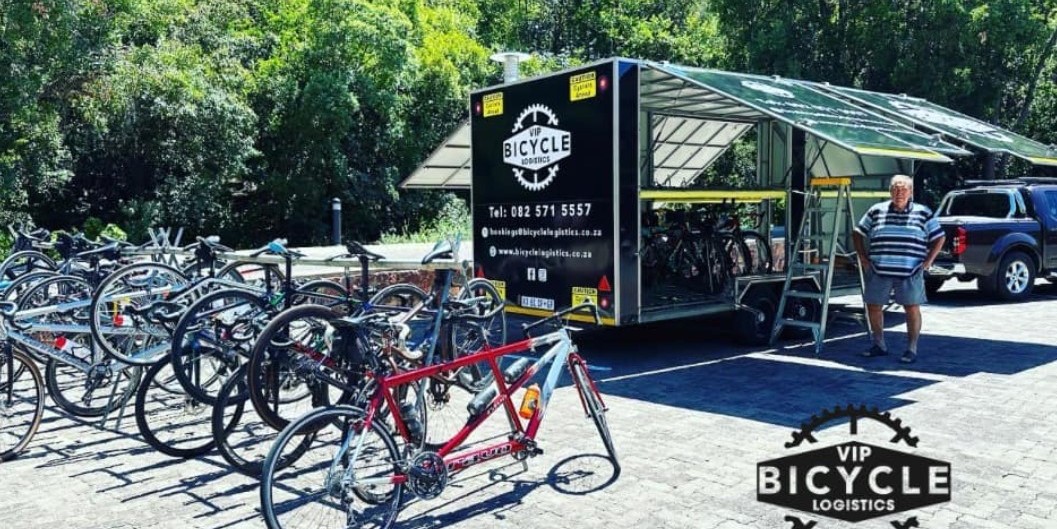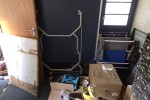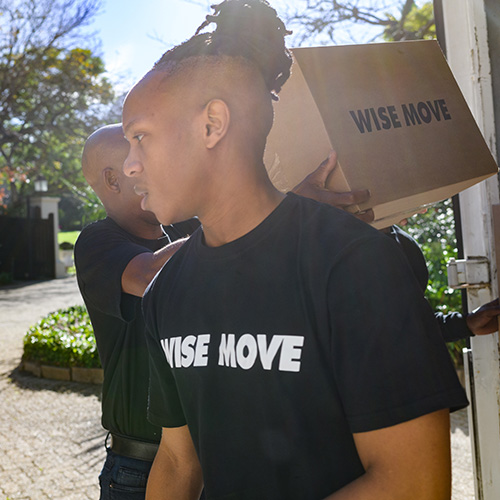
Are you looking for the best way to transport your bicycle in South Africa? Whether it’s for a competition, vacation, or just a leisurely ride, you need to know the best way to get your bike from one destination to the next.
This blog will outline the various methods of bicycle transportation available in South Africa, so you can decide on the best method for your needs.
Choosing The Right Method Of Transport
Choosing the correct mode of transport will be based on your needs. You might need to invest in a bicycle rack for day-to-day use, while you may need to ship a bicycle that you’re buying from someone online or book a professional transport service if you’re doing a competition in another province.
But what method of transportation suits you the most?
Let’s talk about it!
Shipping Your Bicycle With a Courier

Having a courier company take the lead on moving your bicycle from point A to B will alleviate a lot of stress, especially if you’re relocating to a new city.
But before the company can take delivery of your bike, you will need to package your precious cargo yourself. Most courier companies will want to know the package size and weight. Ensure that once your bike is packaged, it is within the parameters of what can be delivered.
The items needed for bike transport via a courier company are:
Arguably the most difficult items to source in the local market will be a box large enough to hold your bike in. You can purchase such a box from local retailers for around R220.
For those who are planning on reusing their packaging, you can invest in a hard travel case, travel bag, or plastic sleeve. These options will be more expensive than the cardboard option, but you can buy them from BikeHub secondhand to reduce your costs.
Keep in mind that you can also sell your boxes this way to save even more! If it's at the end of its proverbial road, make sure you recycle your cardboard moving boxes.
Once you’re happy with your selection of box or carry case, it’s time to start removing accessories from your bicycle.
Accessories to remove when packaging your bike include:
The next item to remove from your bicycle is its pedals. This can be done by turning the bolt in a counter-clockwise direction with a spanner. By removing the pedals, your bike should fit better into its box.
But before you slot your bicycle into the box, make sure to shift the chain on the small chain ring and the largest rear cog. Doing this allows more space between the chain and frame if it does derail in transit.
Now comes the time to remove your saddle. Remember to mark its position with a piece of tape. Also, when removing the handlebars, use tape to mark out the angle.
Handlebars are usually attached by a clamp system that will require loosening a bolt. The gears and brakes will usually detach by simply unclipping them or unscrewing them.
Be aware that some bikes will not allow for easy detachment of the gears and brakes, so ask for professional advice if this is the case.
Ideally, you should remove both wheels to slide the bike into the box. But if this is a bit too advanced for you, removing the front wheel is pretty easy, with the mechanism allowing for simple unscrewing.
Once you’re happy, make sure to pad your bike's frame where it touches the sides of the box with foam tubing, or what they call pipe insulation for bikes in hardware stores.
This will prevent scratches in transit. And using bubble wrap, you can create another level of cushioning. We’d recommend using cable ties to secure it in place rather than industrial tape, which can ruin your bicycle’s paintwork.
If you’d rather ensure your bike makes it from point A to B without any hassles, you can book it onto an aeroplane. Your bike will need to be checked into cargo for the trip.
And, you will be responsible for transporting it to the airport. But if you don’t own a bicycle rack, what are your options? Well, you can buy one.
Buying A Bicycle Rack For DIY Transport

The DIY mover and biking enthusiast who wants their own flexibility will need to buy a bike rack. There are various types available on the market at different price points.
Let’s start with a standard tow-bar rack.
Tow Bar Car Rack
For this rack to work, your vehicle will need a tow bar. How these racks attach to your tow bar will differ.
The traditional boot racks will slot into place via attachments to the tow bar. Almost all will have instructions. These racks vary in size and can carry one to four bicycles.
Usually, the traditional boot rack is cheaper than the platform rack (which we will discuss later). Also, it’s worth noting that to transport an e-bike properly; you need to invest in a good platform rack as they are too heavy for the usual rack.
The pros and cons of a traditional rack are:
Pros:
Cons:
Platform Bicycle Rack
The platform rack will also attach to the tow bar. It is a heavy unit and will require a more sturdy tow bar. They have many of the same pros and cons as the usual rack.
But the configuration of the loading bays means the bikes don’t touch each other, and you can unload whatever bicycle you want, whereas, with the boot rack, you need to offload all of them if you want the last bike on the rack.
Also, they can handle more weight. But if you aren’t keen to install a tow bar, you can also purchase a boot-mounted car rack.
Boot-Mounted Bike Rack
These work by hooking straps between the gaps of the boot. The primary concern about using these is they can cause damage to the paintwork of your car, especially if you’re driving along dirt roads.
Again, they share many of the same pros and cons as traditional racks, except you don’t need to install a tow bar. But they are not as stable as the first two racks we mentioned, and criminals can steal the entire rack with all the bikes.
The last option for those looking to transport their bicycles is to purchase a roof-mounted rack.
Roof Bicycle Rack
You’ve probably spotted a car with a roof-mounted bicycle rack, they're great for transporting bikes and packing for roadtrips - so well worth the investment.
Roof racks are perfect for carrying multiple bicycles without having them touch each other. Also, being mounted on the roof, they make stealing bikes more tricky, as they are incredibly visible. And on the roof, they won’t damage your car’s paintwork.
Another benefit would be that roof bicycle racks don’t restrict motion sensors and cameras. And finally, this type of rack doesn’t require a tow bar.
But what are the pros and cons of a roof bicycle rack?
Pros:
Cons:
If you’re not ready to make the financial investment to buy a bicycle rack, you could always take off your front wheel, lower your back seat and pop it in the back. This generally works for up to two bicycles.
But if you’re a serious rider, we know your cringing. And, if you’re a beginner, you’ll be fed up soon enough. Your other alternative is to book a professional bicycle transport service.
Booking A Professional Bicycle Transport Service
Bicycles are expensive in South Africa. Page through any bicycle catalogue, and you’ll see some hefty price tags ranging between R35,000 to R44,000 for a more specialised bike (or even higher for really professional bikes or e-bikes!).
At this price point, you’d better ensure that it's done right when it comes time to transport your bicycle between A and B. We’d strongly recommend reaching out to a specialist bicycle courier service, especially if you’re looking at participating in an event across the country like:
Finding the right solution or transport company based on your event and needs doesn’t have to be hard. Just make sure you know what options are available and choose according to your needs.
Using a professional bicycle transport company gives you the peace of mind you need to know your bike will get to where it needs to be with the best type of care.
"Our bikes are our livelihood and we take their safe-keeping very seriously. They are transported in an enclosed and secure boxed trailer, which has been specially designed by cyclists, for cyclists. Equipment protection is our main priority; all bicycles have their own dedicated slot where they are housed for the journey, and are clamped by the wheels to ensure safety. NO bicycle will be tampered with; we use a simple roll-on/roll-off mechanism that has been specifically designed for the transportation of bicycles," notes Barend van Heerden from VIP Bicycle Transport and Logistics.

Make sure you get the best possible bicycle transport service or solution that works for your needs. Whether its a DIY solution or a professional bicycle transporter, there are options available to you in South Africa... and make sure you get your bike out to where you want to be and RIDE! We have a beautiful country that should be explored!
What do our customers say?



















![How Many Moving Boxes Do You Need [Quick Guide] How Many Moving Boxes Do You Need [Quick Guide]](https://cdn.wisemove.co.za/image/blog/f402bbe3e47e09aa41a6d8370888b926.jpeg)










